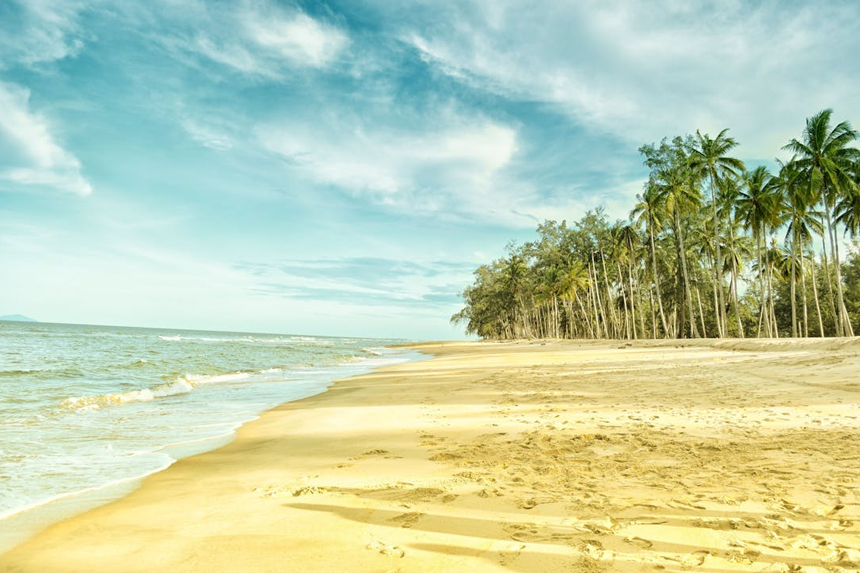Another wave of odd debris has started washing up on Sydney’s coasts, months after enigmatic black balls forced the closure of some of the city’s most well-known beaches. Even if the balls are lighter in hue this time—white or grey—both people and officials are concerned about them. Nine beaches, including some of Sydney’s most famous locations, including Manly and Dee Why, have been closed due to recent beach contamination. Authorities are rushing to determine the origin of this new contamination as the inquiry goes on.
Could a Sewage Spill Have Caused the Previous Incident?
Following the appearance of hundreds of black deposits along the shore, Sydney’s beaches were closed in October. Initially described as “tar balls,” the trash was eventually discovered to contain a bizarre concoction of items, including hair, methamphetamine, cooking oil, soap scum molecules, blood pressure medication, and even veterinary medications.
Concerns were raised regarding the safety of the city’s beaches when tests by local authorities revealed that these black balls were most likely the consequence of a sewage spill. The origin of the black deposits was unknown, despite Sydney Water’s statement that there were no known problems with the city’s sewage systems. Since then, this previous occurrence has been connected to the larger worries about beach contamination in Sydney.
What Does the Most Recent Finding Signify for Visitors to the Beach?
Concerns regarding the persistent beach contamination in Sydney have been rekindled by the most recent discovery, which contains tiny, marble-like material that is either grey or white. “We don’t know at the moment what it is, and that makes it even more concerning,” the Northern Beaches mayor said, expressing her concerns over the mystery material. Something is floating around and being thrown around, clearly leaking or dropping.
The Northern Beaches Council and the New South Wales Environmental Protection Agency (EPA) moved swiftly in response to the recent development. In addition to examining other beaches in the area to determine whether the contamination has spread, the council and the agency have started gathering material samples for additional testing.
Do Authorities Know Where the Contamination Came From?
Authorities are working hard to find the cause of the most recent poisoning. The EPA’s participation is essential to solve the riddle behind these new deposits. An EPA representative stated, “We are actively monitoring the situation, but we don’t know where it’s coming from.”
For officials to obtain additional information, the council also asked residents and beachgoers to report any sightings of the debris. “Please get in touch with us right once if you spot any of these balls. On their official Facebook page, the Northern Beaches Council stated, “We are taking this situation very seriously.”
What Might Be in the Trash Discovered on Sydney's Shores?
The specific makeup of the recently found debris remains unknown despite some similarities to the October black balls. Scientists have noted that the balls are similar to fatbergs, lumps of fat, oil, and grease that usually accumulate in sewerage systems.
Meanwhile, this fresh collection of debris still doesn’t provide definitive answers. The prior balls were discovered to contain various compounds. Still, no formal justification has been offered for why they included such a broad range of components, such as illegal substances, insecticides, and medications.
No one has been able to identify the source of these compounds despite extensive testing, and the continued ambiguity is raising questions regarding the safety of Sydney’s beaches. “The EPA can’t explain the source of the human waste causing the fatbergs, and it can’t assure the public that Sydney’s beaches are safe to use,” stated a state senator from the area. “This is deeply troubling for everyone who loves our beaches.”
When Will Authorities Solve the Mystery?
Authorities are steadfast in identifying the cause of the contamination and guaranteeing that Sydney’s beaches are safe for public usage while testing and other investigations continue. Although the exact scope of the issue is unknown, the recent wave of restrictions has sparked additional concerns about the possible health implications for beachgoers.
Both locals and visitors are left wondering what is causing these odd and worrisome things to wash up on Sydney’s coasts as police continue their investigation and many beaches have been closed. As authorities attempt to identify the source of the contamination and address the safety issues, the mystery surrounding Sydney’s beaches keeps getting bigger.








